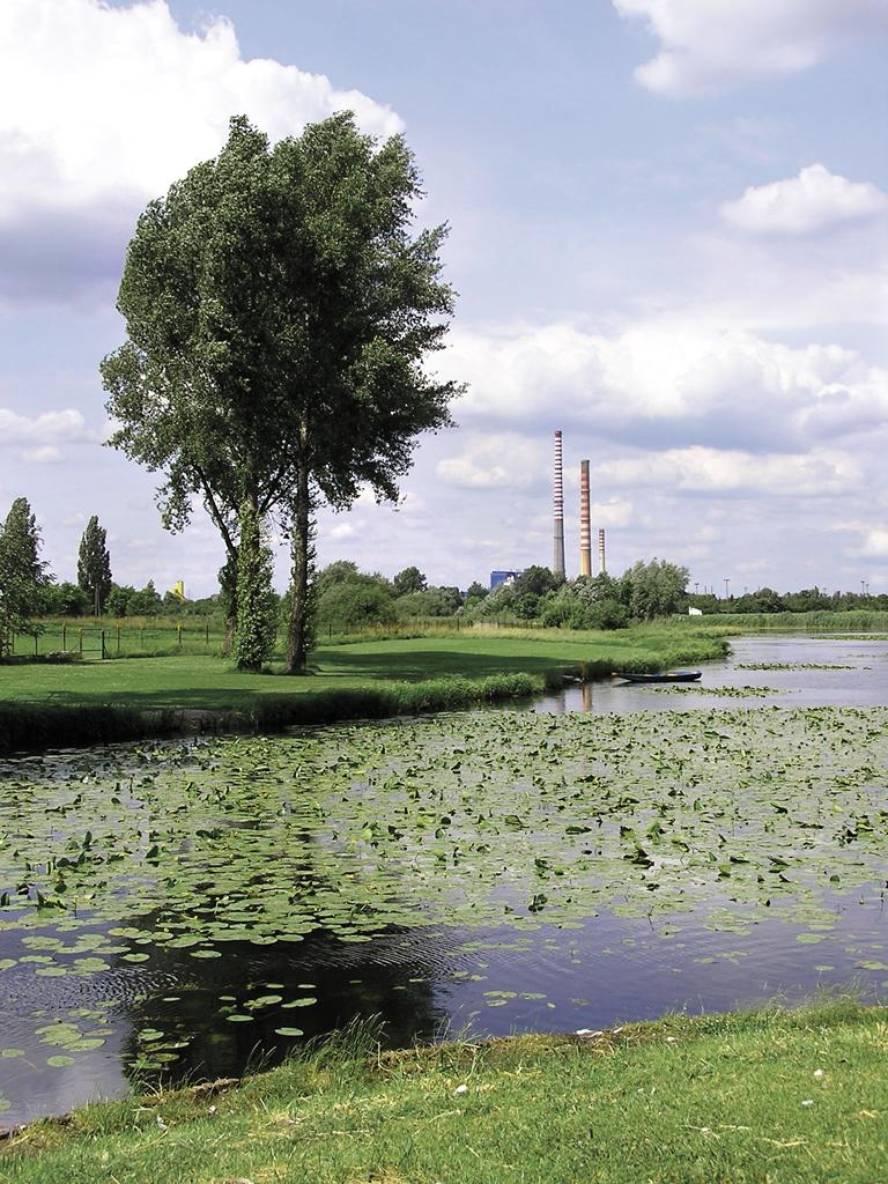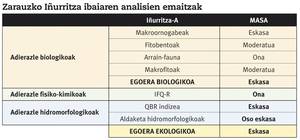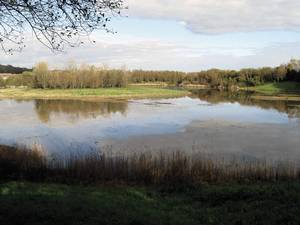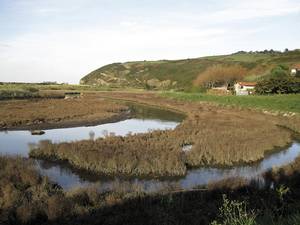Ecotoxicology: mathematics to the rescue of the environment
Urrutiko Hezkuntzarako Unibertsitate Nazionaleko irakasle-tutorea (UNED), Bergarako ikastetxe elkartuan; Kantabriako Unibertsitatea
Simulazioan eta eredu matematikoen aplikazioetan aditua
Urrutiko Hezkuntzarako Unibertsitate Nazionaleko irakasle-tutorea (UNED), Bergarako ikastetxe elkartuan; Kantabriako Unibertsitatea
Simulazioan eta eredu matematikoen aplikazioetan aditua
Human action and pollution
The knowledge of the entire route of our waste and its incidence in human populations is normally impossible due to the factors involved and our inability to manage them. However, there are some living things that can contribute to their survival requiring specific conditions in the environment, in which their presence or absence in an ecosystem is an indicator of their quality. They are known as biological indicators or bioindicators. To study the harmfulness of some compounds, these may contact isolated populations of bioindicators. The information obtained can contribute to improving the waste management of our industry, as well as reducing its environmental impact.
The daily arrival of contaminants to the aquatic media is immense, both in large spills (punctual pollution) and through filtrations and minor and imprecise continuous spills (diffuse pollution). The latter, despite not being so spectacular, are as harmful as others and are more difficult to control. A continuous review of the list of potentially dangerous components and minimum doses of possible environmental impact is carried out. However, each year thousands of new products are sold (pesticides, grass poisons, chemical compounds for industrial uses, etc. ). At the same time, the scientific evidence of involvement in the environment in quantities lower than the legally recognized minimum, as well as those that were not considered harmful, are increasingly abundant.
Another example is the chemical compounds of solar creams and other cosmetic products recently found in rivers. These substances pass to the rivers through wastewater (most of the current filters do not stop them) and are endocrine disruptors, that is, they affect the endocrine system of living beings, which alter their development, reproduction or survival, thus affecting the biodiversity of the ecosystem.
In short, the study of environmental impact of the chemical compounds used by man makes research and permanent controls essential. The best known method is physic-chemical analysis, which consists of the taking of water samples and the analysis of water variables (pH, temperature, hardness, etc.) After several procedures, as well as the existence of chemical compounds selected for their dangerousness (therefore it is important to periodically review the list of these dangerous compounds). It is an essential resource that offers us a "photo" of the state of the water at the time of sampling.
However, as indicated, it may occur that some harmful substances present in water are not yet included in the control lists or that there is no chemical analysis for such substances. It is also possible that the discharge occurs a few weeks before the sampling, since there would be no remains in the water, but there would be a great impact on the populations of organisms especially sensitive to this compound. The physico-chemical analyses indicate the situation at any given time, which is compensated by monitoring the biological state of the waters. The presence and population of living beings selected for their sensitivity to pollution is analyzed. These are the bioindicators mentioned above. Among these bioindicators are algae, fish and arthropods. For example, benthic or benthic macroinvertebrates (mosquito larvae, small crustaceans, molluscs ...) constitute a group of special interest: their size facilitates sampling, they spend a large part of their life cycle in sediments (habitual place of accumulation of waste), occupy a fundamental place in the trophic chain and their survival is very adequate to study the changes after discharge. The sensitivity to contamination is not the same for all species or for all compounds. Therefore, the predominance of one species or another, as well as the diversity of species found, help to identify the origin of the contamination.
A close example is: The Basque Water Agency has established a monitoring network of the state of the surface water masses of the CAPV through periodic controls in the sampling stations selected throughout the Community. Physico-chemical, biological and ecological studies are carried out, since the comparison of all these aspects allows to obtain a real image of the state of our waters. One of the sampling stations is located in the Iñurritza stream of Zarautz. In 2010 the physico-chemical state of this small river was classified as "good", since although phenols, fluorides, ammonia and copper were discovered, their quantities did not exceed the quality standard. But the biological study, among other things, found gaps in the populations of macroinvertebrates; seasonal variations were also observed, as well as the scarce presence of more sensitive species and the predominance of the Chironomus riparius mosquito. After the analysis of all these conditions, the presence of lack of oxygen and organic contamination of unknown origin was observed. This result together with the alterations of the hydromorphological state (vegetation of riverside, bed, water flow, etc.) was the reason for the qualification of “Poor Ecological State”, despite the good physical-chemical situation.
Measure of harmfulness of toxics
As said so far, how should we measure the effect of toxins in different places to avoid the aforementioned problems? Following the instructions of the guidelines published by the Council of Europe, the Organization for Economic Cooperation and Growth (OECD) and similar official bodies, laboratory tests are conducted at different doses and the response of bioindicators such as mortality, growth, reproduction and bioaccumulation is collected.

In addition to obtaining the data necessary to establish the legally allowed limits, these trials help to understand the influence of the substance in the organism through parameters of absorption, distribution, metabolism and elimination, as is done in pharmacological studies that have been carried out for decades in the pharmaceutical industry when they investigate a new active component.
Let's look at the situation: the huge number of harmful substances in constant increase and that must be measured in the time trial, the extensive list of biological indicators - some of which are not yet fully understood physiology - and numerous scenarios: punctual, chronic spills, mixtures of compounds that can influence synergistically... To analyze all these combinations in an order we must resort to mathematics.
One of the best contributions of recent years has been the use of mathematical models and computer simulation applied to the study of ecosystems. Mathematical models of ecotoxicology do not need large amounts of data, both field and laboratory, to find mathematical formulas that indicate the influence of toxic on one or more organisms. This helps to know beforehand the effects of a particular product on a particular ecosystem and, in some cases, to make appropriate decisions, and not just to make decisions that help establish legal limits. Suppose, for example, that the discharge in a river implies the choice of a product of neutralization or a cleaning procedure. An adequate model would simulate all options and help us choose the procedure with lower environmental impact. The simulation also allows to analyze imaginary situations. On more than one occasion unexpected results are collected that open the door to new approaches and approaches not initially contemplated.
Models and Simulation in Ecotoxicology
In ecotoxicology, statistics is the starting point for the approach of mathematical models. For this it is necessary to take experimental data, create the mathematical expression that will be this mathematical model and search for parameters that adapt to the data. Finding this mathematical expression, that is, an adequate mathematical function that explains the model, is the most difficult step in this process. It often starts with the normal exponential distribution and is progressively modified to achieve an optimal adjustment of the data. For example, by changing the simple exponential distribution, we can reach the distribution of Weibull (reaffirming the exponent itself with a parameter), or the distribution of Gonperas (with another exponential in the exponent), among others. Sometimes, the nature of the data obtained is so special that getting its distribution can be a very difficult task. In these cases, the tests are performed with combinations of the previously cited distributions or others. Separate divisions of the exponential are often also used. If for the first time a combination or function is proposed for a specific problem, if the result is successful, the expression will end up taking the name of its discoverer.
The adjustment parameters of the selected distribution are normally related to known variables. For example, EC50, the dose or concentration required for the object of study effect to occur in 50% of the population. On other occasions it is more difficult to give biological meaning to all model parameters.
To overcome these difficulties there is another way of modeling that includes the physiology and metabolism of the organisms studied. Therefore, the following models are known as "toxicological models based on physiology" (PBTK): Phisiology Based ToxikoKinetic models). It is, therefore, a more sophisticated technique that is applied in the following cases: being is divided into compartments, sometimes one, sometimes more than one, and it is studied how the toxic passes through these compartments, obtaining the aforementioned metabolism, absorption, distribution and elimination rates. In the case of mammals or fish physiology is better known, but this technique becomes a real challenge when we try to apply it to certain invertebrates. It is paradoxical that the reduced data of these animals make the model necessary.
Another way to approach the models is to relate them to the effects that produce the molecular structure of the toxins in order to extrapolate them to other toxins of similar molecular structure. These structures are models of "quantitative relation structure of activities" (in English, QSAR: Quantitative Structure Activity Relationship). The relationship is obtained by managing large amounts of data, initially by statistical regression and, currently, with the help of computing, using artificial neural networks.
Therefore, if you value the model that is made with a limited amount of data, that is, if it is demonstrated that it serves to express or predict other experimental data, the next step will be to perform simulations. That is, we can modify some parameters of the model to see the influence of this variation in other parameters. Or analyze the evolution of all parameters over time to understand the long-term effect of the toxic on the selected organism.
Conclusions of the conclusions: Conclusions
Despite the fact that human activity often entails the degradation of ecosystems, we currently have effective mathematical resources to study this effect. The identification of the biological indicators of the different ecosystems, as well as their description at a functional and organic level, can be essential to curb the deterioration of the environment. If we are able to understand the effects on bioindicators using specific mathematical models, we can design appropriate strategies to avoid or process toxins that allow a sustainable development of human activity.









